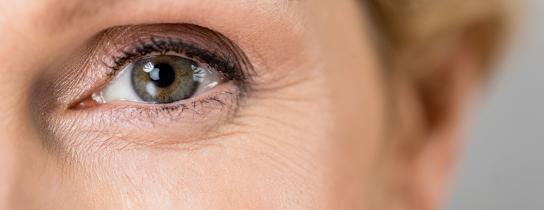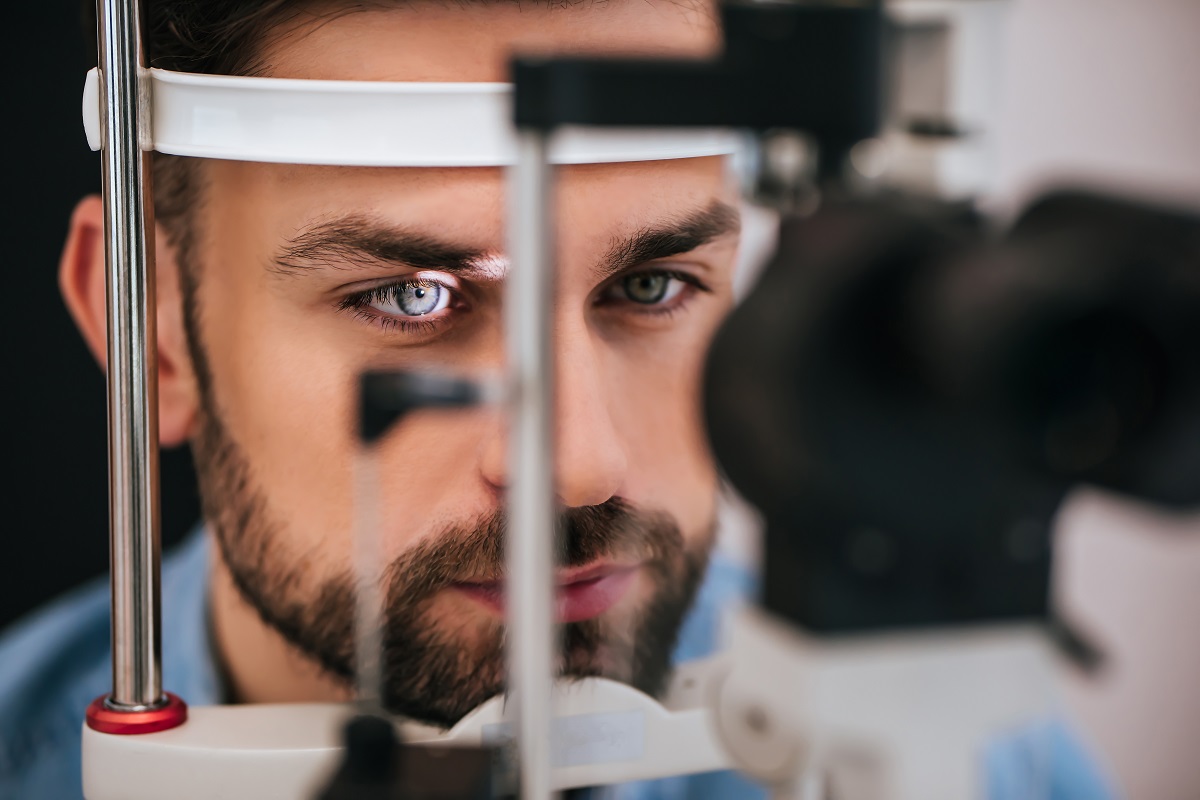
How Blood Pressure Affects Glaucoma
High blood pressure, or hypertension, refers to increased pressure inside the blood vessels of the body. Glaucoma is a medical condition where pressure inside the eye is higher than normal. How are these two diseases related and does high blood pressure cause glaucoma?
If you are searching for an “eye specialist near me” to answer these questions, this article will help explain how these two conditions are linked and what you can do to reduce your risk factors or find treatment. Here's what you need to know about how blood pressure affects glaucoma.
What Is Glaucoma?
A basic glaucoma test measures the intraocular pressure, pressure in the eye, to determine if it is in the normal range. When the fluid inside the eye is under too much pressure, it can damage the nerve fiber layer, which is responsible for capturing and transmitting images to the brain.
If the optic nerve is damaged, vision quality and clarity begin to decline. Over time, if left untreated, glaucoma can cause partial or total blindness. Researchers believe that some kinds of glaucoma are caused by insufficient blood flow to the optic nerves.1
The Link Between High Blood Pressure and Glaucoma
Having a slightly elevated systolic blood pressure does provide additional blood flow to the optic nerve which, at one time, was believed to counteract glaucoma. However, it’s been found that having high blood pressure actually puts some individuals at a higher risk for developing glaucoma.1
Researchers are still investigating why this link exists. Younger people with a slightly elevated blood pressure are actually less likely to develop glaucoma, but, with age, this likelihood reverses. Older individuals with hypertension have a significantly higher chance of being diagnosed with glaucoma.1
What Are the Causes Glaucoma?
Normally, pressure inside the eye is self-regulating. The fluid inside the eye, also known as the aqueous humor, moves into and out of the eye as needed, but sometimes the fluid builds up and pressure increases. This can be caused by injury, infection, or a genetic predisposition to the disease.
Are There Different Types of Glaucoma?
Eye doctors and general practitioners divide glaucoma into two basic types—open-angle and angle-closure.
- Open-angle refers to situations where the channels that regulate eye fluid pressure look normal, but pressures inside the eye indicate that it is not regulating properly. This type is also called wide-angle glaucoma.
- Normal-tension glaucoma involves normal intra-ocular pressure tests, but the nerve damage associated with glaucoma is still present. This would be considered a type of open-angle glaucoma but would not show up on a normal eye pressure test.
- Angle-closure glaucoma is sometimes called acute, chronic, or narrow-angle glaucoma. In this condition, the space available to drain eye fluids is constricted. Any change which further restricts the release of excess fluids can produce sudden onset glaucoma.
What Are the Other Risk Factors for Glaucoma?
Hypertension is not the only risk factor for glaucoma. Other risk factors include:
- Being 40+ years of age
- A family history of the disease
- Poor vision or diabetes
- Taking steroids, including prednisone on a regular basis
- Past trauma or surgery to the eyes
- Having thin corneas or being nearsighted
- Having an eye infection in the past
- Suffering from retinal vein occlusion
- Being of Irish, Russian, Hispanic, Inuit, Japanese, African, or Scandinavian origin
What Are the Symptoms of Glaucoma?
Oftentimes, there are no symptoms of glaucoma until you begin to experience vision loss. Regular eye exams and glaucoma tests will help identify the condition early so that treatment can begin. If you have high blood pressure and are over 40, it is especially important to get regular glaucoma screenings.
Some individuals with glaucoma may have:
- Red or hazy-looking eyes
- Vision loss and halos around lighted objects
- Tunnel vision
- Eye pain
- Vomiting or nausea
What Treatments Are Available for Glaucoma?

Early treatment options for glaucoma may be as simple as prescription eye drops. Your eye specialist may even recommend coming back for regular tests to watch the problem and observe any possible changes. A close examination of your optic nerves will help determine whether damage has started to occur, and which treatments will be most effective.
Some treatment options include:
- Eye drops and medications to reduce fluid production within the eyes or improve the movement of fluids out of the eye.
- Laser glaucoma surgery to relieve small blockages. Types of laser surgery for glaucoma include trabeculoplasty, iridotomy, and cyclophotocoagulation.
- Microsurgery can also be performed to create a new channel and allow backed-up pressure to drain. Sometimes a tube is implanted to keep the channel open after healing and regulate the pressure within the eye.
Low Blood Pressure Can Also Contribute to Glaucoma Progression
When glaucoma develops but pressure is normal within the eye, it is called normal-tension glaucoma. Recent studies show a link between this type of glaucoma and variations in blood pressure, especially between day and night. Those taking medication for high blood pressure seem to be particularly impacted.2
Even though blood pressure is usually lower during sleep, pressure rises inside your eyes. Because the optic nerve requires adequate blood flow, this drop-in pressure can cause narrowing of the blood vessels that feed the nerves of the eye. The body uses autoregulation to ensure that key organs and blood vessels have adequate blood flow; however, when blood pressure drops low enough, the optic nerve is one of the first to be affected.2
Treatment for high blood pressure or “systemic hypertension” is often a schedule of medications that lower blood pressure during the day. The study suggested that nightly drops in blood pressure of 30 to 40 mm Hg below daytime levels might cause a more rapid progression of normal-tension glaucoma.
Signs Blood Pressure Treatments May Be Worsening Glaucoma

Other than monitoring nighttime blood pressure after a medication has been prescribed, it can be difficult to know if the medication is too little, too much, or just enough to reduce the dangerous impacts of high blood pressure.
Signs that your hypertension medications might be making your blood pressure too low include:
- Feeling faint upon standing. Known as postural hypotension, if you feel dizzy when getting up from a chair or your bed, your blood pressure is probably too low.
- Cold, numb, and painful feet or hands. Blood flow to the small blood vessels in the extremities declines as blood pressure lowers, causing the hands or feet to feel cold to the touch and sometimes numb. If fingers turn blue, swell, or ache, these are signs that serious circulation problems are developing.
- Migraine headaches. The same auto-regulatory system may be involved in chronic migraines, which were found to be common among patients with low nighttime blood pressure levels and normal-tension glaucoma.
Glaucoma Screenings and Advanced Treatment Options
When you have risk factors for glaucoma, including abnormal blood pressure variations, or are taking blood pressure medication, choosing an expert team of eye specialists to diagnose and treat these related conditions will provide access to the most comprehensive, individualized treatment plan.
Treating high blood pressure while preventing or slowing the progression of glaucoma is a balance of competing factors. At Crystal Run Healthcare in New York, the Ophthalmology Team can provide diagnosis, medication, laser surgery, and other advanced care for all diseases of the eye.
The solutions to complex problems involving the optic nerves, circulatory system, and autoregulation involve more than searching for “primary care near me.” Contact our multi-disciplinary team for a comprehensive consultation and access to the most advanced treatment available.
Sources:

 Optum Radiology at Crystal Run Healthcare
Optum Radiology at Crystal Run Healthcare Request medical records online
Request medical records online